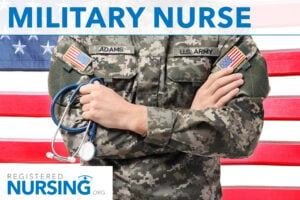School Nurse

What is a School Nurse?
A school nurse works with school-aged children in the educational setting. Students experiencing illness or injury during the school day often report to the school nurse for assessment. Administering routine medications, caring for a child with a virus, or stabilizing a child until emergency services arrive after a more serious injury may all be a part of the job requirements. Resources are often limited and the school nurse must know when the child needs a higher level of care or when parents need to be called. The school nurse may also be required to educate students and staff about health-related issues.
How to Become a School Nurse
A nurse can apply to work at a school upon becoming an RN. Beyond the physical health expertise needed to be a successful school nurse, good candidates also have experience in mental health, school policy and law, and must be comfortable working with children. School nurses must also possess excellent communication skills, as they work with teachers, administrators, and parents. Being in a school setting means that sometimes nurses have a hand in students' social well-being and anti-bullying measures, so being comfortable with resolving conflict is an important skillset to maintain.
What Are the Schooling Requirements for School Nurses?
Nurses who hold an Associate Degree in Nursing (ADN) and even Licensed Professional Nurses are often eligible to apply for this type of position, although the National Association of School Nurses recommends hiring RNs with a 4-year BSN degree who have passed the NCLEX-RN exam and obtained RN licensure. Most schools prefer to hire nurses who have a few years of experience in a clinical setting, as school nurses must make critical decisions without a doctor on-site to assist them.
Are Any Certifications or Credentials Needed?
The National Board of Certification for School Nurses (NBCSN) offers the certification for school nurses. It requires a Bachelor's degree and an RN license, as well as at least 1,000 hours of clinical experience within three years prior to taking the test. Since school nursing services are governed at the state level, each state may have its own set of certification or licensing requirements. The National Association of School Nurses has affiliate chapters in each state that can help determine what additional requirements, if any, are necessary. Read more for further clarity on school nurse certifications. Here are a few quick examples:
| Certification | Length | Key Differences |
| National Certified School Nurse (NCSN) | 75 Continuing Education Hours every 5 years | Recognized nationwide, requires RN license, experience in school nursing, and passing the NCSN exam. Focuses on health promotion, disease prevention, and managing school health programs. |
| Certified Pediatric Nurse (CPN) | 1-2 years of preparation | Requires RN license and pediatric nursing experience. Emphasizes child health, chronic and acute pediatric care, and developmentally appropriate practices |
| School Nurse Emergency Care (SNEC) Certification | 2-3 days (course) | Focuses on emergency care in the school setting, including CPR, first aid, and emergency response planning. Often paired with other certifications. |
| Certified Diabetes Educator (CDE) | 2 years (experience) | Specializes in diabetes management and education, requiring RN license and experience in diabetes care. Useful in schools with diabetic students. |
| CPR and First Aid Certification | 1-2 days (course) | Basic life-saving skills, required for most school nurses, focuses on immediate care for injuries or emergencies. |
| School Nurse Certification (State-Specific) | Varies by state | Some states require a specific school nurse certification, which may involve additional coursework, exams, or clinical experience unique to that state |
Where Do School Nurses Work?
School nurses work in nearly all educational facilities, including public schools, private schools, vocational and/or alternative schools, and more. They can also work in international schools or on US military bases. While school nurses typically work in a health office on a school campus, budget cuts have increasingly forced employed school nurses to travel amongst schools in a particular district, for example. School nurses typically work daytime hours when school is in session, and many have summers, holidays, and other school breaks off.
What Does a School Nurse Do?
School nurses are tasked with caring for the physical and mental well-being of students on a school campus. This involves assessing ill or injured students, administering treatment or first aid, and deciding if a student's parents or emergency services need to be contacted. Students with chronic issues like asthma or allergies may enlist the school nurse to help administer necessary medications or treatments on a regular basis. School nurses may also help assess and treat students with mental health issues like ADHD.
What Are the Roles and Duties of a School Nurse?
- Provide physical and mental health care to students
- Treat illnesses such as fevers, colds, stomach aches, and other ailments
- Administer first aid and wound care to injured students
- Assess illnesses and injuries and contact parents or emergency services if they are severe
- Monitor and dispense students' medications
- Provide health education to students
School Nurse Salary & Employment
The median salary of a school RN is $56,154 with a range of $34,594-$84,304. Location, type of school, experience, and certifications all affect salary.
While registered nursing employment is up in general, school nurses may not see the level of growth that other nursing specialties are seeing due to increasing budget cuts within the school system. However, school nursing jobs are generally low-stress jobs with good hours, so they are highly desirable for those who don't want to work in a fast-paced hospital environment.
| Average Yearly Salary | |
| Top 10% of Earners | $84,304 |
| Top 25% of Earners | $70,889 |
| Median | $56,154 |
| Bottom 25% of Earners | $44,869 |
| Bottom 10% of Earners | $34,594 |
School Nurse FAQs
School nurses play a pivotal role in navigating a child’s health and must be sensitive to the cultural needs of each child on an individual level. Becoming culturally competent is not just about race or ethnicity, it also includes religious beliefs that may significantly differ from the school nurse’s personal beliefs.
Communication is the cornerstone of creating a care plan for a student in the case of religious beliefs regarding medical interventions. It is essential that the school nurse invites an open dialogue with families regarding expectations of care for the child. One cannot assume a lack of medical intervention based on religion is noted on school forms. For example, a student’s file may state Christian Science as the religion, which traditionally does not accept medical care for its denomination, but the family may have varying degrees of practice within that religion.
If a parent chooses to not have any medical intervention for the student, the school nurse must communicate with the parent to create a clear plan of action in the event of an emergency. Asking detailed questions in a respectful manner is essential to come to an agreement and plan of action. While nurses don't have to personally agree with the medical plan based on religious beliefs, the nurse must honor these beliefs unless there is direct harm to the child, at which point the nurse would be mandated to report the issue to Child Protective Services.
Unfortunately, as cutbacks are made to school districts, the immediate availability of the school nurse is also diminishing.
Nurses in schools have dropped significantly in the past 30 years. Most states require that nurses be employed by school districts, yet it is the number of schools and students to oversee that grows as education budgets are cut. The National Association of School Nurses (NASN) recommends one registered nurse for every 750 students; less if there are high numbers of complex students. Most school nurses are responsible to oversee between 920-1200 students. This is a tremendous challenge considering the increase in complicated chronic conditions such as asthma and diabetes. Nurses who are stretched too thin are unable to perform community health services such as assisting families with applying for resources like Medicaid.
While most schools in the U.S. have access to a school nurse, many employ a health aide in their medical bay who can contact a nurse as needed. School nurses are responsible to oversee more students at multiple schools, sometimes many miles apart and only at part-time hours. Only 45% of public schools have full-time school nurses. School nurses must work in tandem with school officials to address the health and safety concerns of their communities. Through this partnership, school nurses will continue to make a positive impact on students and their families.
Helpful Organizations, Societies, and Agencies
- National Association of School Nurses
- National Board for Certification of School Nurses
- National Association of State School Nurse Consultants
- American School Health Association
- The Journal of School Nursing








